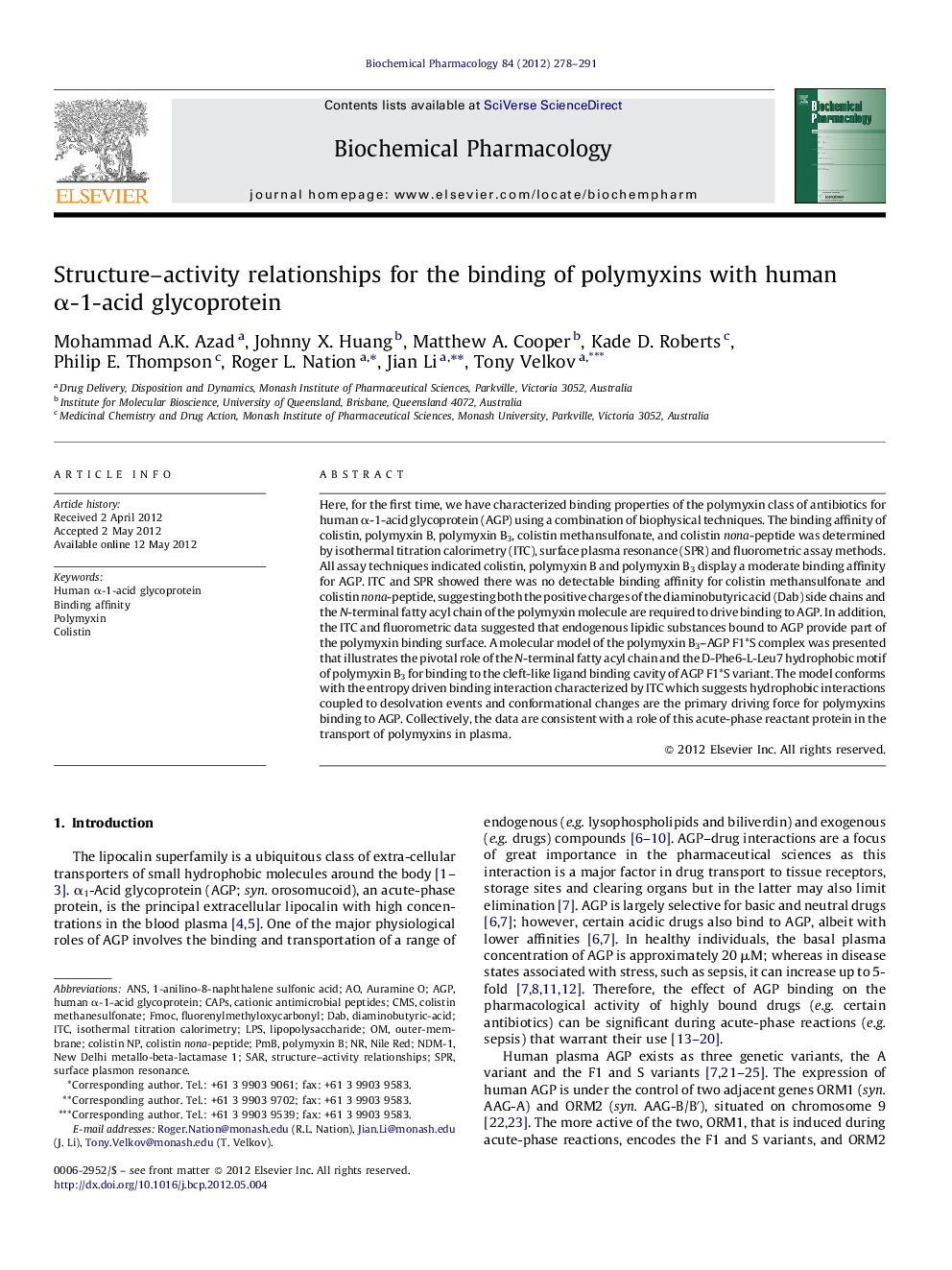| Article ID | Journal | Published Year | Pages | File Type |
|---|---|---|---|---|
| 5823896 | Biochemical Pharmacology | 2012 | 14 Pages |
Abstract
Here, for the first time, we have characterized binding properties of the polymyxin class of antibiotics for human α-1-acid glycoprotein (AGP) using a combination of biophysical techniques. The binding affinity of colistin, polymyxin B, polymyxin B3, colistin methansulfonate, and colistin nona-peptide was determined by isothermal titration calorimetry (ITC), surface plasma resonance (SPR) and fluorometric assay methods. All assay techniques indicated colistin, polymyxin B and polymyxin B3 display a moderate binding affinity for AGP. ITC and SPR showed there was no detectable binding affinity for colistin methansulfonate and colistin nona-peptide, suggesting both the positive charges of the diaminobutyric acid (Dab) side chains and the N-terminal fatty acyl chain of the polymyxin molecule are required to drive binding to AGP. In addition, the ITC and fluorometric data suggested that endogenous lipidic substances bound to AGP provide part of the polymyxin binding surface. A molecular model of the polymyxin B3-AGP F1*S complex was presented that illustrates the pivotal role of the N-terminal fatty acyl chain and the D-Phe6-L-Leu7 hydrophobic motif of polymyxin B3 for binding to the cleft-like ligand binding cavity of AGP F1*S variant. The model conforms with the entropy driven binding interaction characterized by ITC which suggests hydrophobic interactions coupled to desolvation events and conformational changes are the primary driving force for polymyxins binding to AGP. Collectively, the data are consistent with a role of this acute-phase reactant protein in the transport of polymyxins in plasma.
Keywords
CMS1-anilino-8-naphthalene sulfonic acidcolistin methanesulfonateNDM-1PMBFluorenylmethyloxycarbonylFMOCCAPSDABAGPSARITCLPSAuramine OSurface plasmon resonanceSPRStructure–activity relationshipsANSouter-membranelipopolysaccharideNile RedBinding affinitypolymyxin BPolymyxinCationic antimicrobial peptidesIsothermal titration calorimetryColistin
Related Topics
Health Sciences
Pharmacology, Toxicology and Pharmaceutical Science
Pharmacology
Authors
Mohammad A.K. Azad, Johnny X. Huang, Matthew A. Cooper, Kade D. Roberts, Philip E. Thompson, Roger L. Nation, Jian Li, Tony Velkov,
